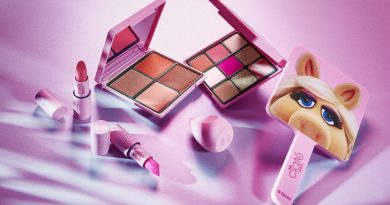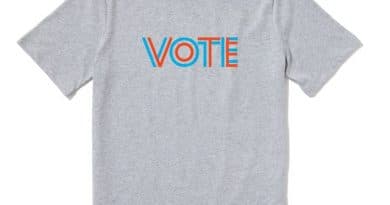Inside Fashion’s New Formula 1 Obsession Ahead of the Miami Grand Prix – WWD
It’s a sport with the glitz, glamour and global cachet of tennis and equestrian sports — but at 200 miles an hour. Formula 1’s surging popularity, particularly in the United States, is sending luxury brands racing to find some skin in the game — throwing millions of dollars at a sport already steeped in luxury.
And this weekend, that will come to a head in Miami at the very first Miami Grand Prix. The new Formula 1 race, for which there was a special autodrome built, is bringing even more attention on the city, that — with its cerulean waterways, historic excess and rocket-high housing prices — is quickly becoming the United States’ own version of Monte Carlo. The race is considered a “defining moment,” in Formula 1’s new, entertainment-driven era — and fashion is eager to get involved.
“The Miami F1 race has turned F1 into the Coachella of motorsport — it’s a giant marketing opportunity,” said luxury retail consultant and Highsnobiety automotive editor Jonathan Schley.
Formula 1 is emerging as the post-pandemic era’s most consequential sport, with the kind of opulence and high-stakes energy that meets this current, larger-than-life moment. Despite widespread inflation and economic disparity, excitement around extravagant cultural events like this week’s Met Gala and even, more broadly, K-Pop’s rich flamboyance demonstrates that there is still an appetite for unbridled displays of prosperity.
There is something aspirational and compelling in watching star drivers like Charles LeClerc, Lewis Hamilton and Daniel Ricciardo traverse the globe in private jets — elemental to Formula 1’s traveling circus — all to drive circles around a track in the gritty pursuit of millions of dollars. This is part of what has quickly made F1 part of the larger conversational landscape – particularly in New York City where discussion of the sport can be overheard everywhere from the subway to a bourgeois wine bar.
“The reality with racing is that in a lot of ways it naturally appeals to this instant gratification and high-content culture we have. You have the perfect recipe for drama — you have all these young guys with egos making millions of dollars a year doing something dangerous,” said Schley.
Formula 1’s U.S. expansion is just getting started. Race viewership in the U.S. has soared — propelled by the Netflix series “Formula 1: Drive to Survive,” which premiered in 2019 and has since run four seasons detailing the behind-the-scenes relationships and conflicts that happen deep within F1’s paddocks. Cable network ESPN, which exclusively airs Formula 1 in the U.S., saw a 54 percent year-over-year increase in F1 viewership in 2021 and those numbers are even higher this year, averaging around 1.3 million viewers per race in a country that remains the world’s largest luxury market. On Thursday, Netflix announced that its own series had been renewed for a fifth and sixth season.
“There is a high value because it’s one of the hottest, if not the hottest sport of the moment on the planet really — it’s going through a renaissance,” said Tag Heuer chief marketing officer George Ciz.
The brand sponsors Team Red Bull, which includes last year’s world champion driver Max Verstappen, and releases annual watch collections in collaboration with the team that routinely sell out. This week in Miami it is hosting a series of events to woo high-spending clients and VIP’s. “It’s more than a sport, it’s a cultural phenomenon. It’s really special — all the glitz and glamour around it is what makes people excited. Everyone wants to be at the parties and have access to the grid,” he added.
Contrary to other sports popular in Europe, including soccer, that attempted U.S. expansions to questionable success, Schley added that, “Formula 1 just proliferated overnight to a level that is like nothing I’ve seen before. It seems to have such sticking power.”
Fashion’s involvement is endless — particularly at this Miami race. LVMH Louis Vuitton Moët Hennessy new crown prize Tiffany & Co. is making the race’s podium trophies; IWC Schaffhausen held a golf tournament with Hamilton and Tom Brady; and Ferrari has opened a new boutique for its F1-inspired fashion line at the Aventura Mall among countless more activations from brands including Berluti and Ray-Ban.
On Thursday evening, Berluti announced in Miami that it had signed a major sponsorship deal with the BWT Alpine team, with the brand calling itself Alpine’s new “elegance partner.” Berluti will supply “elegance kits” including Venezia leather steering wheel cases to the team’s two drivers Fernando Alonso and Esteban Ocon, as well as outfit them for select events.
Berluti chief executive officer Antoine Arnault said in a statement: “We are thrilled to have been introduced to the world of Formula 1, one of the most extreme, demanding, historical and prestigious sports…Lifestyle offering has long been among Berluti’s core values and expanding it into this partnership with BWT Alpine Formula 1 as their elegance partner felt like a natural step.”
Even drivers are getting in on the opportunity with their own fashion brands like efforts from LeClerc and Ricciardo, the latter of which also has a wine label. Seven-time world champion driver Hamilton is the first in a generation to become a global household name and has embraced the moment — attending fashion shows, collaborating with brands like Tommy Hilfiger and attending last year’s Met Gala, where he famously purchased a table and invited a suite of emerging Black designers, thus bringing attention to their talent.
According to fashion companies consulted by WWD, an F1 sponsorship appears to return dividends on investment. More so than other sports, F1 integrates its sponsor logos in a highly visible manner — displayed on the sides of cars and on drivers’ one-piece suits. Now, that’s leading to eyeballs on track — and months later on Netflix, in a country that has an enduring, seemingly insatiable appetite for luxury goods.
It amounts to big business — more so than other racing leagues like IndyCar and NASCAR which have different positioning. Puma’s senior manager for integrated marketing in motorsport, Bastian Radloff said that “F1 is the core of our business With all of these partners we have got licensing deals which give us the opportunity to design and produce motorsport lifestyle collections implementing the logo of the partners which is a great asset to interact with the F1 community to inspire those people to express their passion for motorsport.”
At its heart, F1 is a stylish sport with a vintage quality, like the drivers’ ’70s-style onesie racing suits that recall previous F1 golden eras and their penultimate drivers like Niki Lauda, Ayrton Senna and Michael Schumacher. Lucky for brands, these suits are a key platform to have their logos displayed.
Tommy Hilfiger, who was early to F1 sponsorship (he signed on with Lotus in 1991) and continues to have a presence, now through the Mercedes-AMG Petronas team (including Hamilton and up-and-comer George Russell), sees this as a huge advantage and said it offers a “cool factor.”
“There are a limited amount of sponsors allowed with each team and a limited amount on each car. I know a lot of luxury fashion companies are trying to get in, it’s very different and very expensive now. Our fees are going up every year,” said the mogul designer, who spent COVID-19 locked down with Mercedes team principal and CEO Toto Wolff.
“We have done studies and what we have found is that the audience is growing every single year, it’s really be very beneficial. We are a global brand and in every part of the world that hosts the race is where we have a lot of business — Singapore, Melbourne — all these cities do see an uplift [in sales] whenever there is a race,” added Hilfiger.
Ciz added of Tag Heuer’s experience: “When you live in a world full of messaging and we are bombarded all day it’s hard to cut through. Here we have an amazing opportunity. When Max [Verstappen] won the final race last season it generated amazing interest in us and we were able to communicate around it.”
This fashion element is also reeling in women to Formula 1 in the U.S., perhaps more so than in other markets.
Conti Communications founder Sophie Roche Conti said that, “the sport has this simplicity but also a carnal hotness with its drivers. I think it’s a no-brainer and is just very palatable in the times we live in that are more divisive than ever — very few sports bring together traditional sports fans and the fashion world around something people can enjoy. I think F1 has become the new tennis — that’s how I see it. We haven’t reached peak F1-growth at all.”
Parade founder and chief executive officer Cami Téllez, a recent Formula 1 fan, even had hoped to wear a vintage John Galliano F1-themed dress to the Miami Race.
Her appreciation for F1 drivers leans on, “Hamilton, F1’s undisputed star despite a tough season, who has positioned himself as a fashion icon — sitting front row at Valentino, but often donning clashing prints, Off White, bold fuchsias, nylon Prada, tie-dye, and Heron Preston. I’m interested to see how his continued project around elevating Black designers and fluency in street-style aesthetics impacts style on the track,” she said.
“It’s not just about the mechanics of the car, I love the connection of the male ego but there is camaraderie in the team,” said New York-based stylist and designer Emily Dawn Long who has also recently taken up an interest in Formula 1.
This all adds intrigue Formula 1’s American positioning, with its opulence and jet-set European provenance. In March, well before Miami’s circuit debut, Formula 1 announced it was adding another United States-based race to its schedule. A new street circuit race is being devised for Las Vegas, to be held in November 2023. This will bring F1’s U.S. race footprint up to three — adding to its long-running United States Grand Prix in Austin, Texas.
Conti, who has advised clients on F1 sponsorships, said she would recommend one to, “any brand with a sports component. It’s a terrific opportunity and has the sensibility and elegance to target an affluent audience.”
“I think the pandemic created opportunity for a lot of sports to reset and what’s interesting with that is when sports innovate. F1 is doing that from a position of strength, they are doing all the right things to improve,” said Ciz.
For now though, all eyes are on Miami, where the culture of Formula 1 and sports fandom has a potential to shift into new territory. As Téllez said: “Sporting events are the moment where sociocultural temperature becomes coded into fashion — is this going to be as formal as the Southern belle-inspired Kentucky Derby, or is this going to have more of the flavor of the Patagonia vest and jeans that has been plaguing the Super Bowl for the past few years? It all depends on how American royalty crystallizes at the racetrack — Jeff Bezos? Meghan Markle? Karlie Kloss? We’ll know more soon.”





